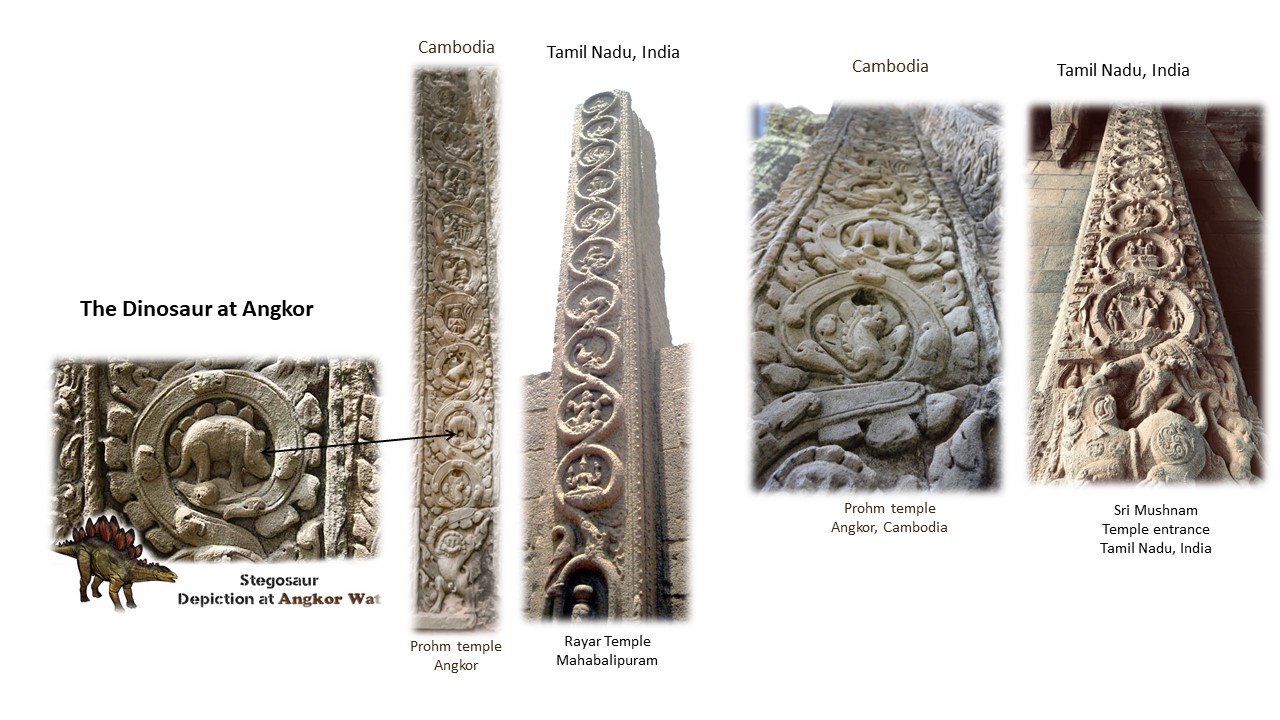
Angkor Wat Dinosaur demystified
Angkor Wat Dinosaur demystified
The magnificent Angkor Wat temple is the largest religious monument on earth, built on 1.6 million square meters in the 12th Century dedicated to the Hindu god Vishnu.
Among the millions of sculptures and giant stone wonders, a hand-sized sculpture depicting a dinosaur-like animal, a stegosaurus exactly, has created in the last few years many theories and interpretations.
Several different theories have been advanced to explain its presence. Some maintain it’s a recently-carved hoax, while others say that the ancient Khmers could have unearthed a fossil and figured out what kind of creature it belonged to. One theory tells that the image actually shows a cow or rhino with a palm tree in the background - the palm’s fronds being easily mistaken for the fin-like blades running down a stegosaurus’ back.
Or maybe the carving is evidence that dinosaurs really did live on until much later than previously thought! Dinosaurs lived millions of years ago, Angkor Wat was built thousands of years ago!
Here is a possible explanation.
When we look at the detailed history and architectural styles of Angkor temples, many similarities can be drawn with the south Indian temples and the mystery behind the Angkor dinosaur can be explained.
Historians agree that the Pallava kings in Tamil Nadu in India were remarkable sailors and ruled a vast region in southeast Asia. The Pallava kings and traders influenced the temple architecture in the region.
The small dinosaurs sculpture is simply a depiction of the human evolution theory ( or the Vishnu avatars) in Hindu mythology.
In the Pallava temples in south India, exactly 10 sculptures were carved in a huge standing columns at temple entrances. These ten sculptures represent the 10 Vishnu avatars. The second avatar is usually represented with a sea tortoise.
So now how do we explain the depiction of the mysterious dinosaurs in Angkor?
There is a similarity between these standing sculptures depicting 10 carvings representing the human evolution theory as per the Indian mythology. The one in Angkor built during the Khmer dynasty and the one in India built during the Palava dynasty seem to tell the same theory. While in India it is a tortoise, in Angkor it is a dinosaur, it is also known that these two animals share a common origin. This may simply mean that the evolution theory was known before Darwin and Jurassic Park imagined before Spielberg.
Coumar Ananda - Corona writings 2020
Trop sympa ta publication Tu sais que j'ai vecu 17ans dans si beau pays et je connais si bien ces merveilles
Responsable PECH @BNPPARIBAS #unexpectedjobs
3yBelle analyse Coumar👌👍
Experienced Professional in Project Management, Property Management, Procurement and Administration
3yinteresting study Coumar